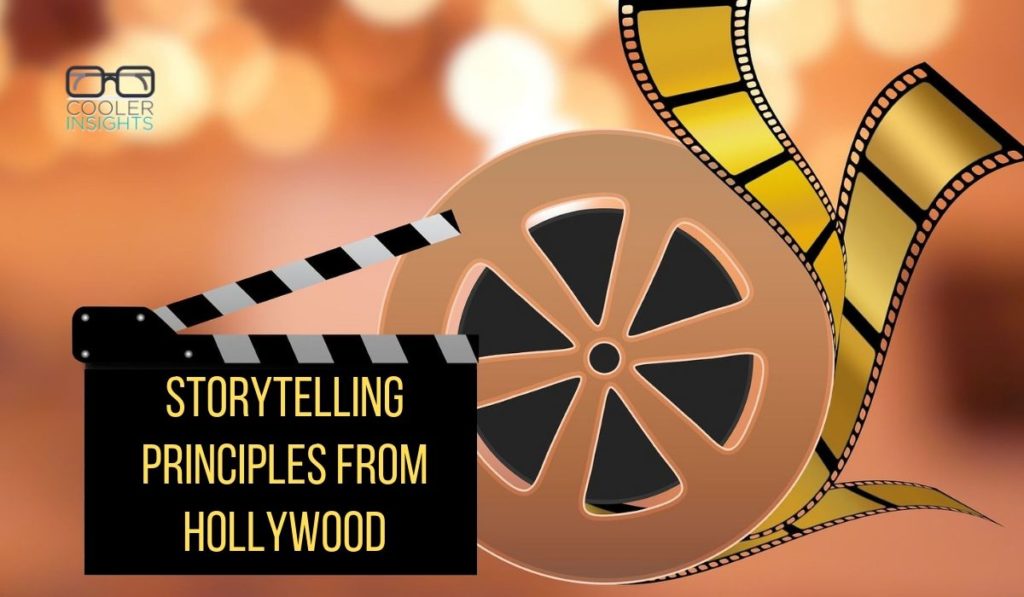
Stories are like fire. And storytellers? Fire-starters.
Great stories are the sparks that illuminates the human soul. They can comfort and connect, inspire and instigate, or devastate and destroy.
The best stories have the power to transform nations, revolutionise political systems, or heal the land. Iconic political, civic and corporate leaders from Martin Luther King Jr, Sir Winston Churchill, Chairman Mao, Steve Jobs, and even Jesus depend on storytelling to achieve their goals.
But how can you wield the power of stories in the digital age? What techniques can you use to improve the art and science of social media storytelling?
Thanks to the slim volume Do Story: How to tell your story so the world listens by Hollywood storytelling consultant Bobette Buster, we now know how best to tell our stories.
Seasoned with mouth-watering case studies and examples, the book provides useful recipes to cook up your own delicious tales of adventure, enchantment, and delight.
Ready to whip up a yummy yarn for your social media accounts, blogs or online video channels?
Tell Your Story to a Friend
“You can speak well if you… can deliver the message of your heart.”–John Ford
No matter who you are relating the story too, treat them like a friend.
Imagine that you are chatting with a friend as you go on a walk together. Or pretend that you are having coffee with your audience and relating your story to them face-to-face.
Set Your GPS (Context)
Setting the context for your story helps your audience to visualise your story better.
This includes giving the place, time, setting and any other relevant context to your story. These may be rooted in the political, historical, economic, or social environments surrounding the events which took place.
Keep it factual, short and sweet.
Use Active Verbs
As Bobette herself has written, “Think Hemingway.”
Spice up your choice of verbs, but keep them short and succinct.
Invest in a thesaurus to keep your words short.
Avoid “multisyllabic, erudite, four-dollar words, over-intellectualising, philosophising, qualifying.”
Juxtapose Ideas
![]()
Icons featured in Apple’s Think Different (source of image)
Thesis + antithesis = synthesis–German philosopher Friedrich Hegel
Where possible, take two disparate ideas, images or thoughts and place them together. This tool awakens your audience. It is the root of all successful stories.
Apple’s Steve Jobs is a master in this craft. His ‘Think Different’ campaign (some claimed it wasn’t him) for Apple begins with “Here’s to the crazy ones, the misfits and rebels…” and vividly contrasts these words with black-and-white photographs of visionaries who shaped the 20th century.
By doing so, the viewer is plunged into a state of wonder. You reflect on what it took for these leaders to change the world. The conclusion: if you dare to ‘think different’, you might well change the world too. And perhaps dare to buy an Apple computer.
Watch the video below, voiced by Steve Jobs himself.
Gleaming Detail
Choose one ordinary moment or object that becomes a ‘gleaming detail.’ This is the “one thing that captures both the emotion and idea of the story at once, in one fell swoop.”
A singular, elegant moment of clarity, it represents the truth within the story.
Here are some well-known examples of gleaming details in stories:
- The 10 Commandments in the story of Moses in the Bible
- The BMX bicycles featured in the movie ET-The Extra Terrestrial by Stephen Spielberg (see below)
- The poster of Rita Hayworth (or the chess pieces carved by Andy Dufresne) in the movie The Shawshank Redemption (oh how I love that movie!)

The famed Rita Hayworth poster featured in the Shawshank Redemption (source)
Hand over the Spark
Stories always transform you. Often, the stories that we tell involve a ‘threshold’ moment in our protagonist’s life.
Reflect on the original experience or idea which captivated you. Find a way to hand that same encounter over to your audience, and to “carry the fire” to them.
The story of charity:water‘s founder Scott Harrison is a good example.
Formerly a wild-living and highly successful nightclub promoter in New York, Scott decided one day that he wanted to get away from it all. Hopping on board the floating hospital ‘Mercy Ship’ as a volunteer photographer, he ventured to various African countries.
Scott was moved to tears when he came face-to-face with some of “the most wretched deformities and tumours humans can suffer.” A conversation with a volunteer doctor on board the ship helped him to learn that much of the sickness around the world was due to drinking unsafe water.
This episode triggered Scott to put his promoter skills to good use. Today, charity: water funded over 38,113 water projects for 9.6 million people around the world.
By narrating Scott’s own journey, Bobette managed to ‘hand over the spark’ to me. Likewise, I hope I’ve done the same for you.
Be Vulnerable
Show your skin. Dare to bare and share. Extol the emotions in your story.
Vulnerability as defined by Brene Brown, is about putting “our art, our writing, our photography, our ideas out into the world with no assurance of acceptance or appreciation.”
In the world of storytelling, it involves sharing with courage and emotion what truly happened.
“Be unafraid to ask your audience what you questioned along the way so that they share your doubt, confusion, anger, sorrow, insight, glee, delight, joy, and epiphany.”–Bobette Buster
The Story Behind the Story
Sometimes known as the backstory, your story behind the story provides a fresh perspective to your audience.
You need to be vulnerable, and maybe even embarrassing, to shed the light behind the real story. This is the hidden narrative that holds it all together.
An example came from former US President Barack Obama. His own memoirs Dreams from My Father: A Story or Face and Inheritance where he dares to share his journey as a mixed-race child in America endeared him to many of his voters.
Another good example of a backstory or origin story is that of JK Rowling–the billionaire author of the Harry Potter series. Rowling’s own story as a desperate single mother who got rejected 12 times by publishers made her tale more enchanting.
“Forget about the microphone, just speak to me. As a friend.”–Lionel Logue to King George VI, The King’s Speech
Highlight a Sense Memory
Choose the strongest of the five senses (see, hear, smell, taste, touch). Use it to forge a deeper connection with your audience.
A sensory retelling of your story can help your audience to better ‘feel’ it. Make your description evocative and lingering.
Taste and scent are often good senses to focus on. Here’s an example of a story focusing on the senses. Which ones does it focus on?
The Journey is the Story
Sometimes, just narrating how you got to where you did makes the story itself.
This can be anything from your trials and tribulations, serendipitous detours and charming characters faced, as well as the antagonists you encounter.
Road trips are great examples of stories woven into journeys. So are episodes in a person’s life leading to milestones like graduation, getting married, witnessing the birth of your child, finding a job, or witnessing the death of a loved one.
Make the Personal Universal
Powerful storytellers like Steve Jobs have the gift of selling an idea. Often, they anchor this abstract idea to a personal moment, event or experience of their own.
Doing so makes them vulnerable. It also helps them to communicate in a deep and resonant manner.
In the case of Steve Jobs, his passion was to “sell the idea of personal creativity” as a kind of revolution. This was seen in the Think Different example above.
Here’s an example of a great story (and speech) which perfectly embodies this principle. He is none other than Martin Luther King Jr!
Bring Yourself
A story is as much about you as it is about anything else.
In virtually all the greatest stories ever told, the protagonist is often someone whom the storyteller and his audience can relate to. They connect closely to the storyteller’s humanity, and relate to events that are unique, memorable and emotional to him.
Let it Go
Last, but not least, you need to hand over your story to your audience.
Let your story build up to its natural crescendo and climax–a natural, emotional punchline. And then end it and get out fast.
Leave your audience wanting more. Less is more.
Conclusion and Exercise
As a brand storyteller and content marketer, I’m hooked on stories. Regular readers will know that I’ve written on this topic repeatedly.
While many of us are familiar with the structure of a good story, few may know how to make it resonant and evocative. Thanks to Do Story, we now have some guiding principles on crafting winning stories.
Before I end, let me flesh out an exercise (adapted from the book) for you to craft your own story:
- Was there a “Force of Nature” in your life? They can be an antagonist who have provoked, incited or caused you to become your best self, even if you loathed them before.
- What were you like previously? Highlight your fears.
- Include a ‘gleaming detail’ – something ordinary which became extrordinary
- Focus on one (or two) of the senses
- What is the GPS: time, place, context?
- What happened in your story? Narrate the events.
- What actions did you take to change?
- Show, not tell, the change. Use an action moment or contrasting moment to do so.
I hope that this book review has been helpful for you as you craft your own personal and corporate brand stories. Let me know your thoughts on this.
Need Help with Your Digital Storytelling?
As brand storytellers and content marketers, we’d love to help you tell better stories online! Fill in the contact form below for a free Skype or Zoom consultation session!

Excellent write up and really interesting read.